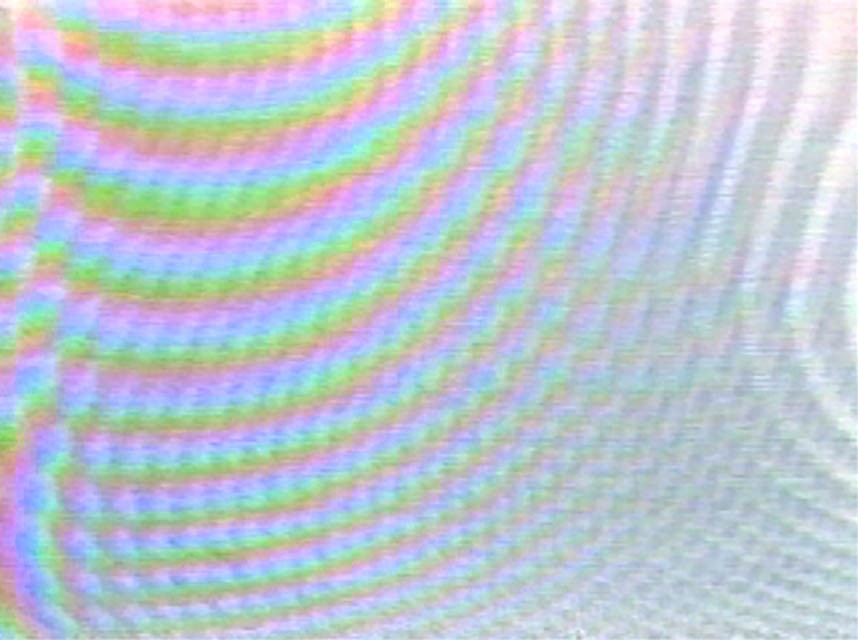Anyone who rides public transportation has likely experienced this breach of commuter etiquette: fellow passengers’ oblivion to the tinny blare emanating from their headphones. Students enrolled in “The Harmonic Archive: Music, Sound & Installation Art as Artistic Research” have used this ubiquitous contemporary soundscape as the basis for one of two new works, which they will present in Bartos Theater on Tuesday, December 9th at 8:30pm, in a performance titled The Harmonic Archive. The second work, rooted in the minimalist tradition, is a four-track piece that uses sine waves and room acoustics. CAST Visiting Artist Arnold Dreyblatt, who teaches the course, describes these pieces as “performance installations.” “We want people moving,” Dreyblatt insists, for the works require the audience to change locations to appreciate fully each piece’s aural and visual properties.
Dreyblatt, a composer and media installation artist, has been in residence at MIT in fall 2014, developing new multimedia work, performing, and teaching. Dreyblatt’s musical and artistic practice has ranged from composition and performance to permanent installations, digital projections, dynamic textural objects and multi-layered lenticular text panels. His visual artworks create complex textual and spatial visualizations about memory, reflecting upon such themes as recollection and the archive. A member of the second generation of New York minimalist composers, Dreyblatt has invented a new set of original instruments, performance techniques and a system of tuning. He has led numerous ensembles under the title “The Orchestra of Excited Strings,” for over thirty years.
For the course, “The Harmonic Archive,” Dreyblatt drew upon his own artistic practice in addressing three main topics: musical minimalism, instrument building and sound art. With a group of eight undergraduate students from diverse disciplines, Dreyblatt wanted to give his students a foundation in the fundamentals of sound itself and visual aesthetics to inform their final projects. They studied the works of John Cage (Water Walks), Ellen Fullman (Long string instrument), Terry Fox, Christina Kubisch (Electrical Walks), Max Neuhaus (Sound Walks), Gordon Monahan (Swinging Loudspeakers), Rolf Julius, Robin Minard, Steve Reich (Pendulum Music, Four Organs), La Monte Young (Composition No. 7), Alvin Lucier (Music for Snare Drum, Pure Wave Oscillator and Reflective Surfaces; I am sitting in a room), and Janet Cardiff (40 part Motet), to grasp the range of directions composers and sound artists take.

The first piece presented in The Harmonic Archive addresses the experience of overhearing music from some nearby person’s headphones. In this piece, the individual tracks are less significant than the experience of partial hearing and mishearing created by the hushed cacophony of multiple speakers playing simultaneously. In Dreyblatt’s own work, texts are often used in a similar way, where the emphasis is on the difficulties of interpreting fragmentary information.
The four-track sine wave piece is designed to raise questions about the primal experience of sound, the nature of hearing, and the relationship between aural perception and environment. Dreyblatt says that when he was a student, sine waves – frequencies with no harmonic content — were an acoustic revelation to him. Having studied under La Monte Young and Alvin Lucier, he was eager to introduce his MIT undergraduates to their seminal minimalist works, as well as some of the basic principles of sound, which these composers so eloquently exploited in their work.
The Harmonic Archive presents a study in contrasts. While one of the pieces being performed Tuesday evening is quiet, visually engaging and socially oriented, the other is loud, focused on the sonic and introspective.
The Harmonic Archive takes place in Bartos Theater on Tuesday, December 9th at 8:30pm.
This performance is presented by the Center for Art, Science & Technology (CAST) and Music & Theater Arts (MTA).
Learn more about CAST Visiting Artist Arnold Dreyblatt.
